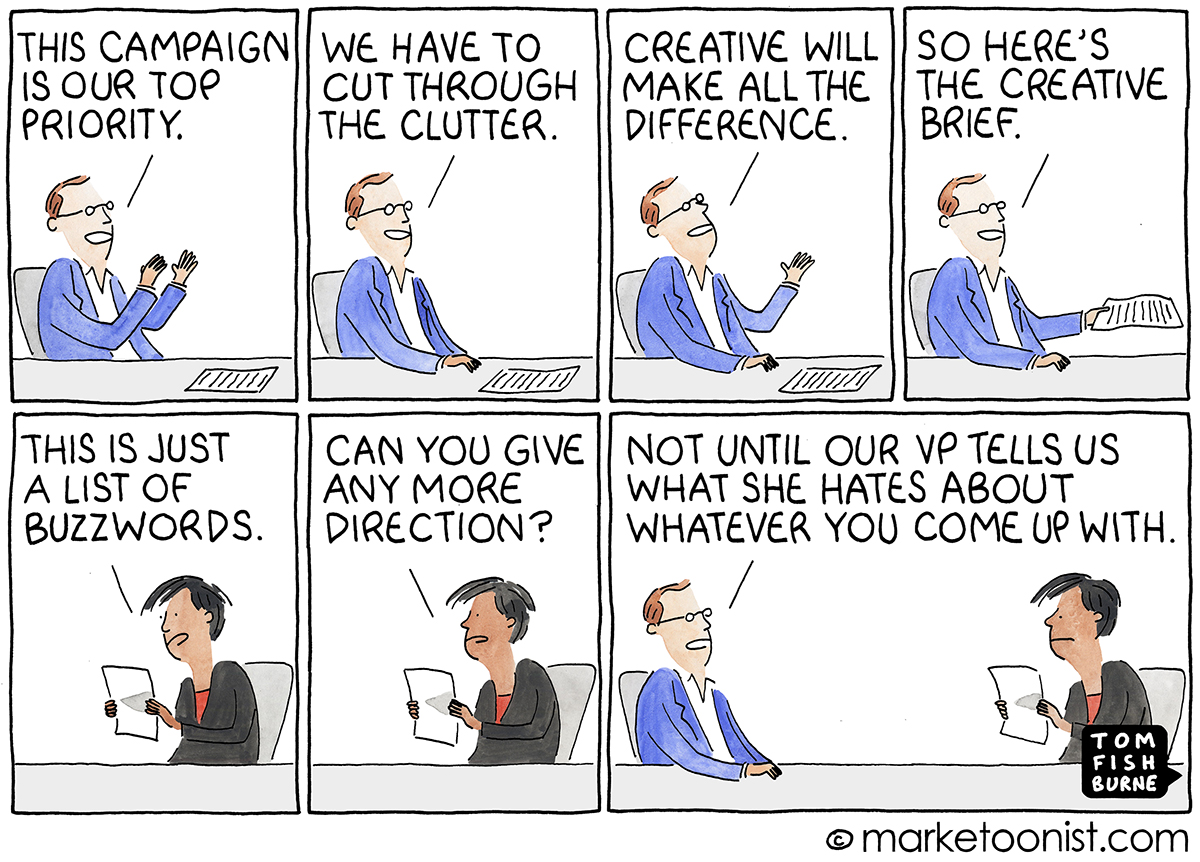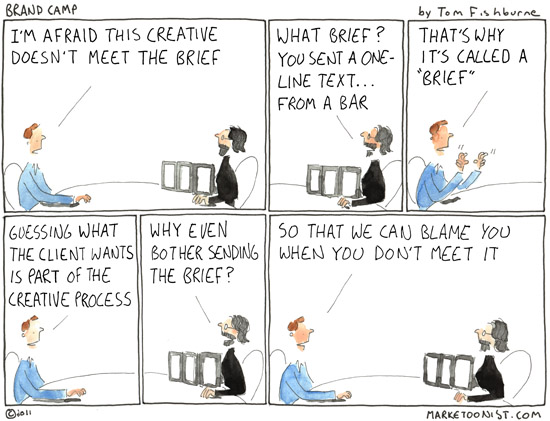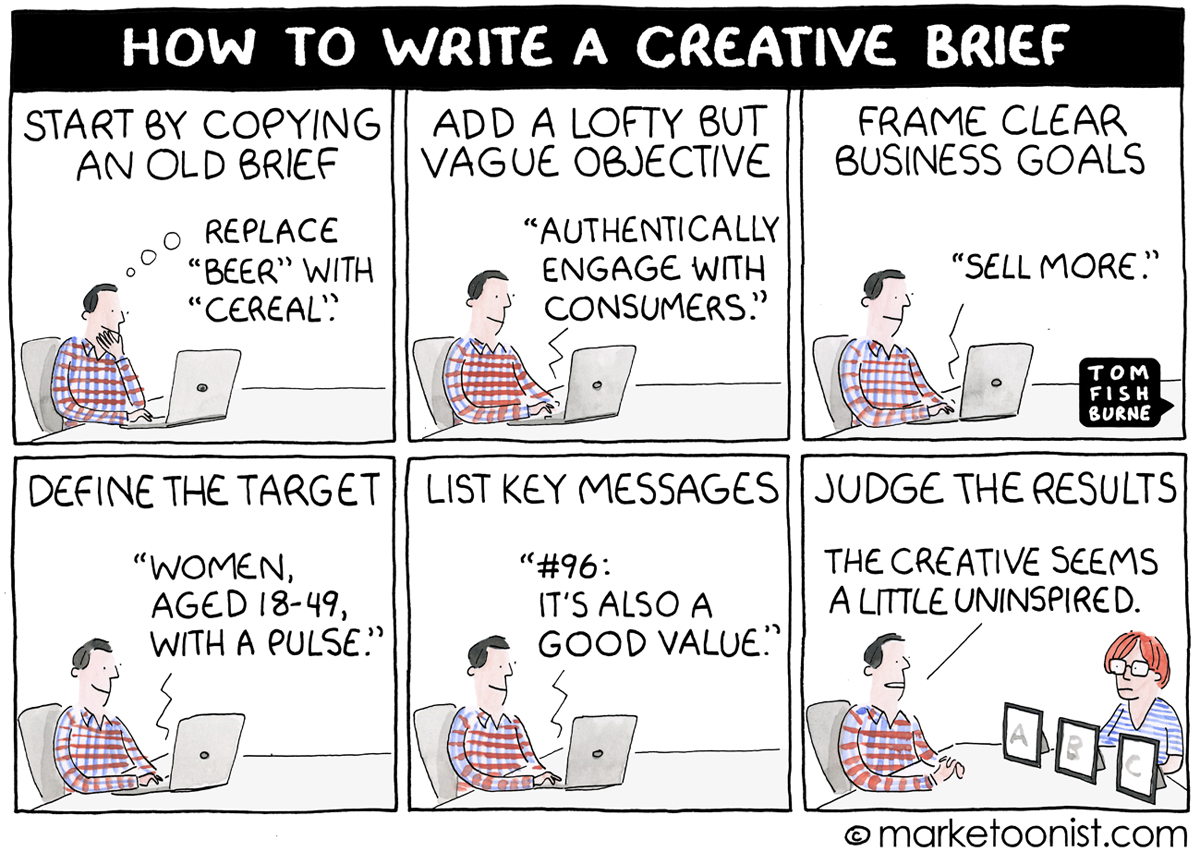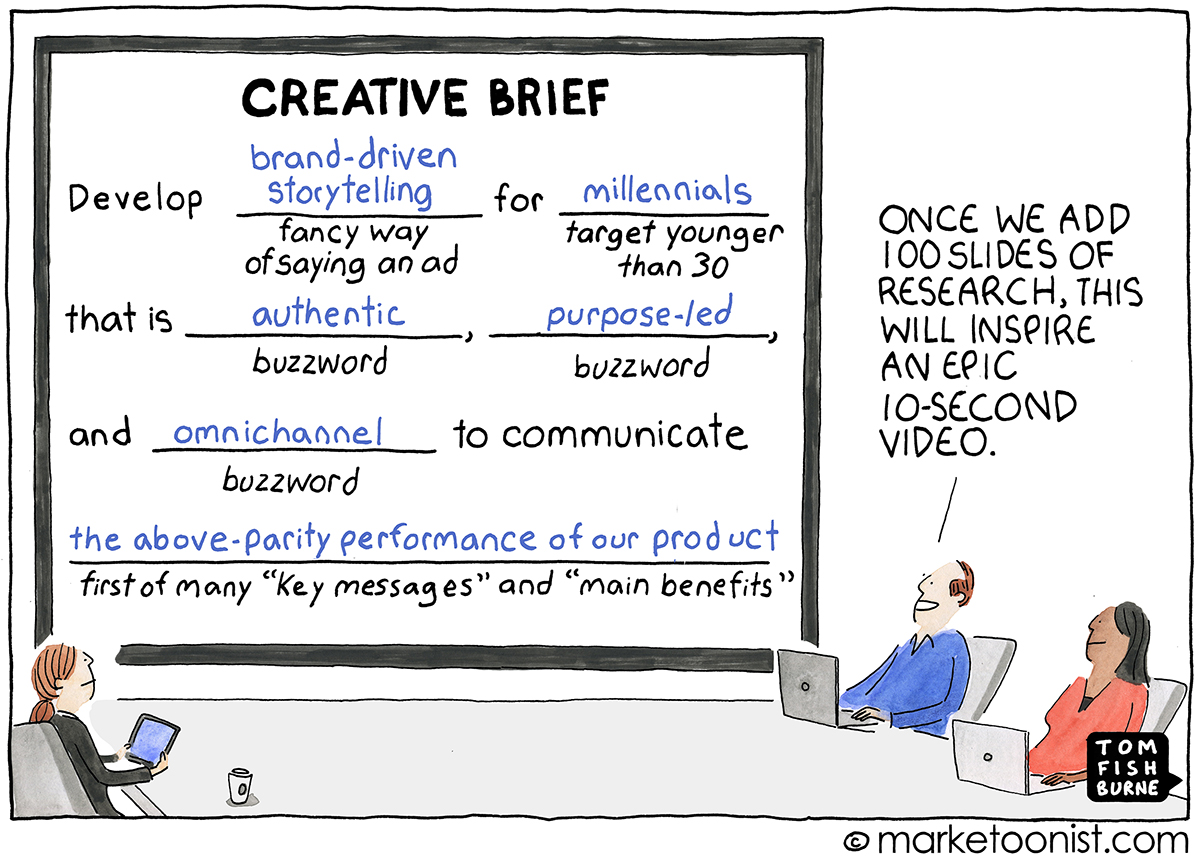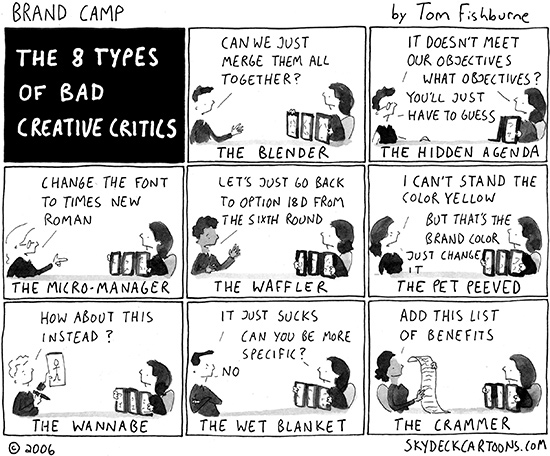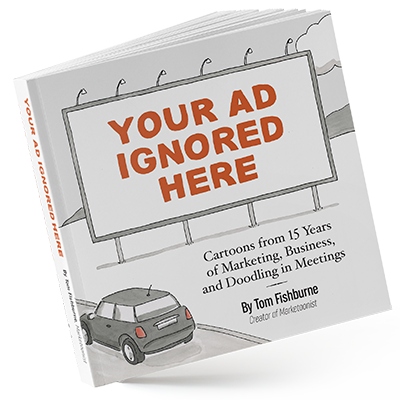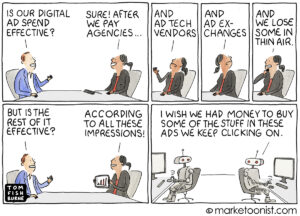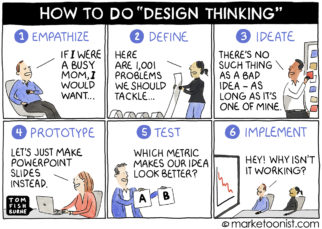In 2015, the ANA surveyed advertisers and agencies to identify problems in the often dysfunctional client/agency relationship. One issue rose to the top — the creative brief.
The ANA found that 58% of clients believe they do a good job with creative briefs. Yet only 27% of agencies agree (and 0% “strongly agree”). This gap in perception between those giving briefs and those receiving them is a fundamental problem in marketing communication.
Creative Director Mark Duffy once described creative briefs as “the worst pieces of communications in business history.” As he put it:
“Briefs serve one purpose, and one purpose only: covering ass.
“Creatives — copywriters, art directors, and graphic designers — refuse to do advertising work for a product or service without a brief signed off by the client. Meanwhile, marketing people often fill out these briefs with the vaguest, most meaningless sentences possible that will make it impossible for the agency to blame them when the ads don’t work.”
Too often creative briefs are treated as an afterthought, which results in the old axiom of “garbage in, garbage out”.
Yet the need for good creative has never been greater. Nielsen analyzed the elements that impact ad performance and found that creative contributed 47% of total sales, the most of any element, followed by reach (22%), brand (15%), and targeting (9%). And, in 2019, the IPA found that creativity delivered its lowest effectiveness in 24 years.
With the bar so low, this creates an opportunity for marketers who learn to prioritize the humble creative brief. When I once worked on a challenger brand with a tiny ad budget, we were able to get disproportionate attention from our agencies because we invested so much time and attention into our creative briefs.
Writing a creative brief can be a creative act.
Here are a few related cartoons I’ve drawn over the years (including a really early one from 2006):
